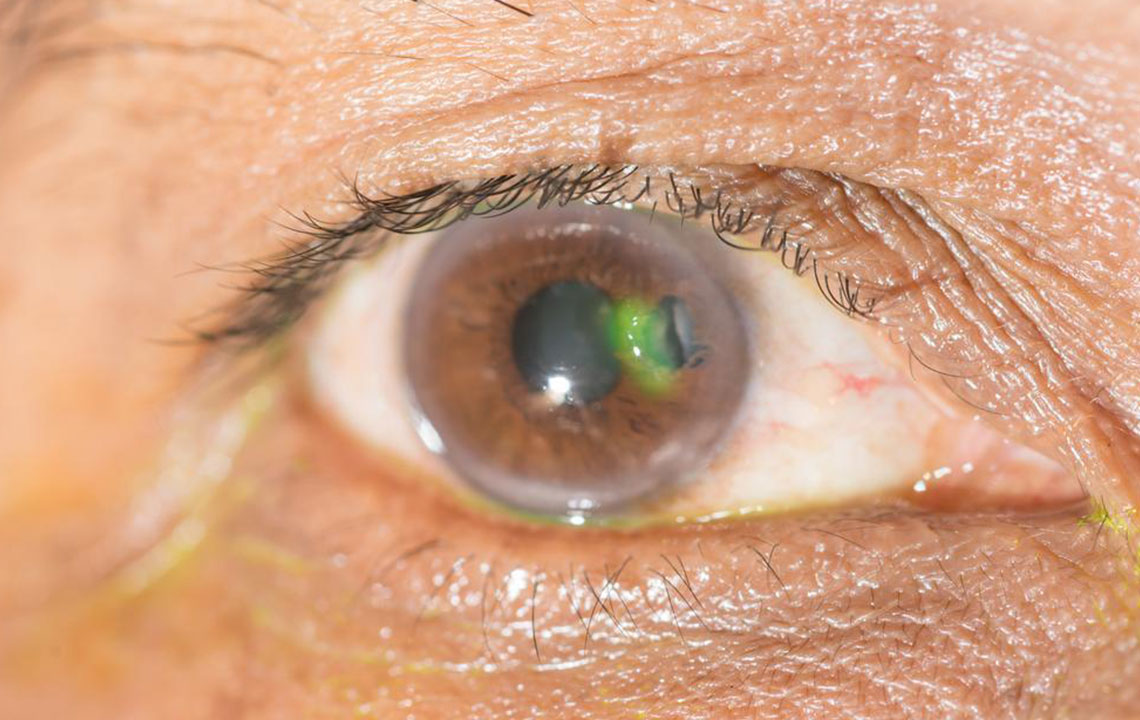Various eye diseases and their symptoms
Most of us would suffer from eye problems one time or the other. While some may be treatable at home, others need the care of a specialist. Eyes are complex organs that require many parts to work together to produce a clear vision. Proper eye health can be maintained by having all parts to function well.
There are many eye diseases and their symptoms, a few of common ones are listed below.
What are the various eye diseases and their symptoms?

1. Eyestrain
Reading for long hours, working for long hours in front of the computer, or driving long distance can lead to overusing of eyes. Just like any other part of the body, eyes too get tired and need some rest. This is one of the common eye diseases, symptoms of which are given below.
Symptoms of strained eyes are:
- Sore, tired, burning or itching eyes
- Watery or dry eyes
- Blurred or double vision
- Headache
- Sore neck, shoulders or back
- Increased sensitivity to light
- Difficulty concentrating
- Inability to keep the eyes open
2. Red eyes
Experiencing bloodshot eyes for some days? The eye’s surface is a network of blood vessels; when they are irritated or infected, they give the appearance of the red eye look. Anything from allergies, to lack of sleep, dry eyes, a late-night sleep, or any internal injuries can be responsible for red eyes. It could also be a symptom of conjunctivitis
Symptoms of red eyes are:
- Gritty feeling
- Burning sensation in the eye
- Occasional blurred vision
- Heavy eyelids
- Inability to cry
- Eye fatigue
- A stringy discharge
- Discomfort with contact lenses
3. Night blindness
Finding it hard to see in the dark or at night or difficulty in making around the dark corners? It might be owing to night blindness, which is a disease that can happen due to sun exposure or due to diabetes. The underlying cause might be cataracts, lack of vitamin A, prolonged sunlight exposure, deficiency in zinc, LASIK surgical problems, diabetic retinopathy, etc.
Symptoms of night blindness are:
- Weak vision in dim light
- Difficulty seeing during night driving
- Vision adapting slowly between bright and dim light conditions
4. Conjunctivitis
In conjunctivitis, the tissue that lines the back of the eyelids and covers the sclera gets inflamed. People of all ages can get it. Causes include infection, exposure to chemicals and irritants, or allergies.
Symptoms of conjunctivitis are:
- Redness in the white part of the eye
- Swelling of the eyelids
- Itching or burning feeling of the eyelids
- Enlarged lymph node (gland) in front of the ear
- A lot of tearing
- Clear or slightly thick, whitish drainage, usually while waking up in the morning
5. Cataract
Cataract is the clouding of the normally clear lens of the eye. The eye lens is like that of a camera. Light passes through it to the retina, which is the back of the eye where images are processed. With a cataract, light can’t get through as easily. Hence, it appears to look through a frosty or fogged-up window. Cloudy vision owing to cataracts can make it more difficult to read, drive a car at night or see anything very clearly.
Most cataracts develop slowly and take time before they start interfering with the vision.
Symptoms of cataract are:
- Clouded, blurred or dim vision
- Increasing difficulty with vision at night
- Sensitivity to light and glare
- Need for brighter light for reading and other activities
- Seeing “halos” around lights
- Frequent changes in eyeglass or contact lens prescription
- Fading or yellowing of colors
- Double vision in a single eye
6. Glaucoma
This disease is a group of eye conditions that damage the vital eye nerve called the optic nerve responsible for several functionalities. High pressure inside the eye can damage the nerve. Most commonly, glaucoma has no visible signs. It has a very gradual effect and usually not noticed until it is an advanced stage. Therefore, routine eye check-up to determine the condition of the nerve is recommended.
It is not a common disorder. However, glaucoma can be caused by an injury to the eye, blocked blood vessels, or inflammatory disorders of the eye.
For open-angle glaucoma, the symptoms are:
- Patchy blind spots in the peripheral or central vision for both eyes
- Tunnel vision in the advanced stages
For acute angle-closure glaucoma, the symptoms are:
- Severe headache
- Eye pain
- Nausea and vomiting
- Blurred vision
- Halos around lights
- Eye redness
If left untreated, glaucoma can also cause complete blindness. Even with treatment, there is a good chance of turning blind within 20 years of surgery.
7. Presbyopia
Presbyopia is a condition wherein an individual, despite having good distance vision, fails to clearly see close objects and small print.
Common symptoms of presbyopia are:
- Strained eyes or headaches after reading or doing close work.
- Difficulty in reading the small print.
- Require bright lighting when reading or doing close work.
- Holding the reading material at an arm’s distance to focus properly on it.
It is advisable to have enough information about these common eye diseases, symptoms, causes, and their treatment. Regular eye check-ups are required in order to prevent these eye diseases.